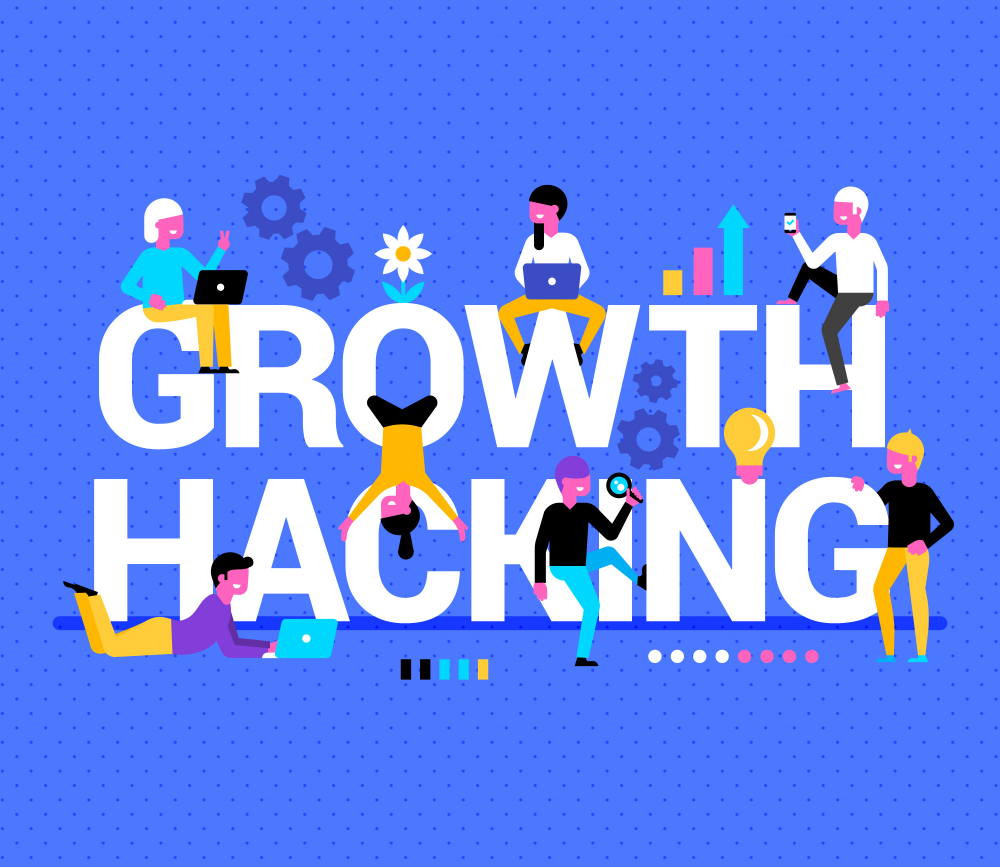
Growth Hacking Techniques for Rapid Business Growth
Definition and Importance of Growth Hacking
Growth hacking isn't just a buzzword; it's an essential strategy for startups and established businesses aiming for rapid expansion. Combining creativity, analytical thinking, and digital marketing skills, growth hacking breaks away from conventional marketing strategies. It prioritizes agility, experimentation, and innovation, all aiming at one thing: growth, and growth at an exponential rate. Have you ever wondered how some brands seem to appear out of nowhere and take the market by storm? They likely have growth hacking to thank.
Overview of Rapid Business Growth and Its Significance
In our fast-paced digital age, slow and steady doesn't necessarily win the race. Rapid business growth is about seizing opportunities, reacting quickly to market changes, and capturing large customer segments. Achieving this growth isn't just about survival; it's about thriving in a competitive landscape. Without rapid growth, companies risk falling behind and becoming irrelevant. How do businesses unlock this growth? Let's delve into growth hacking and discover the secrets.
Understanding Growth Hacking
What is Growth Hacking?
Definition and Concept
Growth hacking isn't merely a marketing technique; it's a philosophy. It's the relentless pursuit of growth using unconventional, low-cost strategies combined with traditional digital marketing. It emphasizes agile methodologies, constant experimentation, and actionable metrics. It's about finding the quickest, most effective ways to achieve growth, breaking down barriers, and innovating at every step. Are you thinking like a growth hacker yet?
Key Principles and Mindset
Unlike traditional marketing, which relies on set paths and budgets, growth hacking is fluid, adaptable, and hungry for growth. It's about asking, "What can we do differently?" and "How can we do it better and faster?" It seeks to identify the most efficient ways to grow, whether through product development, customer engagement, or other innovative approaches. Isn't that what every business needs?
The Role of Growth Hacking in Startup Growth
Why Startups Need Growth Hacking Techniques
For startups, traditional marketing can be a slow, expensive path. Growth hacking offers a nimble, cost-effective alternative. By leveraging creative strategies, personalized experience, and data capture, startups can achieve growth at an unprecedented rate. Ever heard of HelloFresh? They've used chatbots to enhance customer support, offering discounts and directing users to relevant pages, growing their customer base at an impressive pace.
Examples of Successful Growth Hacks in Startups
Let's look at Roof Ai, a tool used by real-estate marketers to automate potential lead engagement and lead assignment via social media. By employing human-like conversational agents and smart algorithms, Roof Ai provides better customer service, bridging the gap between leads and conversion. Another noteworthy example is Endurance, a companion bot designed to support dementia patients. It's growth hacking applied to a social cause, showcasing the wide applicability of these techniques.
Benefits and Challenges of Growth Hacking for Startups
Growth hacking can be a game-changer for startups, allowing them to compete with established players without massive budgets. It enables them to be innovative, agile, and focused on results. But it's not without challenges. Ethical considerations, maintaining quality while scaling, and ensuring alignment with brand values are all essential considerations. So, how can startups overcome these challenges and leverage growth hacking to its fullest? The techniques we'll explore next may hold the answer.

Essential Growth Hacking Techniques
Customer Acquisition Strategies
Identifying Target Audience and Channels
Understanding who your customers are and where they hang out is paramount in growth hacking. By identifying your target audience's needs, preferences, and behaviors, you can tailor your marketing efforts to connect with them precisely when and where they're most receptive. For example, if your audience spends significant time on social media, leveraging platforms like Facebook or Instagram can be a goldmine. It's like fishing in a pond teeming with fish, but do you have the right bait?
Leveraging Social Media for Customer Acquisition
Social media is not just a place to share pictures and updates; it's a vibrant marketplace waiting to be tapped. By creating engaging content, utilizing paid advertisements, and interacting with followers, businesses can turn social media channels into robust customer acquisition tools. Ever wondered how some posts go viral, reaching millions? It's all about hitting the right chord with your audience.
Influencer Marketing and Partnerships
In today's world, influencers wield significant power. By partnering with the right influencers, businesses can reach audiences they might never have access to otherwise. It's like having a popular friend introduce you at a party. Suddenly, everyone's interested. Collaborative content, shoutouts, or product placements can turn followers into customers. But how do you choose the right influencer, and what's the perfect collaboration for your brand?
User Retention and Engagement Strategies
Importance of User Retention in Rapid Business Growth
Attracting customers is great, but retaining them is even better. User retention means building a loyal customer base that not only buys your products but advocates for your brand. Imagine having a friend who not only supports you but brings more friends to the party. That's what loyal customers do for your business. But how do you turn a one-time buyer into a lifelong fan?
Onboarding and Activation Techniques First impressions last, and the onboarding process is your chance to make a lasting impression. By employing chatbots, like HelloFresh, to create a conversational care experience or offering guided tours of your product, you can make customers feel valued and engaged. It's like welcoming a guest into your home and showing them around. They'll feel more comfortable, and they might just stay longer.
Personalization and Gamification for User Engagement
Personalization makes customers feel special, and gamification makes engaging with your product fun. Combine these two, and you've got a potent strategy for keeping users hooked. Imagine a video game that calls you by your name and adapts to your playing style. That's what personalized gamification can do for your product or service.
Viral Marketing and Referral Programs
Creating Viral Loops and Incentivizing Sharing
Going viral is the dream of every marketer. But it's not just about luck; it's about creating content that resonates and encourages sharing. By tapping into emotions, humor, or current trends, and offering incentives for sharing, you can create a viral loop. It's like starting a dance craze; once it catches on, everyone's doing it. What's your viral dance move?
Case Studies of Successful Viral Marketing Campaigns
Dropbox is a classic example of successful viral marketing. They offered extra storage space for referrals, and users flocked to share. Airbnb's referral program, which provided travel credits for both referrer and referee, is another stellar example. It's about creating a win-win scenario, where sharing benefits everyone involved. It's like sharing a delicious cake with a friend; you both get to enjoy it.
Designing Effective Referral Programs
Creating a referral program isn't just about offering a discount. It's about understanding your customers' needs, designing incentives that resonate, and making the referral process as seamless as possible. Think of it as inviting friends to a party. You'd choose the right venue, music, and food, wouldn't you? A referral program requires the same attention to detail.

Measuring and Analyzing Growth Hacking Success
Key Performance Indicators (KPIs) and Metrics
Identifying the Right KPIs
Every business is unique, and so are the metrics that measure success. Selecting the right Key Performance Indicators (KPIs) is like choosing the right ingredients for a recipe. You need the ones that will make your dish sing. Customer acquisition cost, lifetime value, conversion rates, retention rates - these might be some of your key ingredients.
Monitoring and Analyzing Metrics
Keeping a close eye on your metrics is essential. It's like monitoring the temperature when baking; one wrong move, and your dish is ruined. Real-time tracking, using tools like Google Analytics or HubSpot, enables you to tweak strategies on the go, respond to trends, and make informed decisions.
Using Analytics Tools for Informed Decision Making
Why Analytics Tools are Vital for Growth Hacking
In the age of data, analytics tools are your compass. They guide you through the vast sea of information, helping you navigate towards your growth goals. By capturing, analyzing, and interpreting data, you gain insights into customer behavior, market trends, and the effectiveness of your strategies. It's like having a map in a treasure hunt.
Examples of Effective Analytics Tools
Tools like Google Analytics, Mixpanel, or Tableau are more than just software; they're your partners in growth. They allow you to visualize data, track user journeys, and uncover hidden patterns. You can understand where your customers come from, what they like, and how they interact with your brand. It's like having a crystal ball, only it's backed by data.
Conclusion
Growth hacking has evolved from a fringe concept to a mainstream strategy. It's no longer just for startups; it's a critical tool for businesses of all sizes. With advancements in AI, machine learning, and big data analytics, the future of growth hacking looks even more exciting. Imagine personalized marketing powered by AI or virtual reality experiences that take user engagement to a new level.
References
- Patel, N. (2020). "Hacking Growth: How Today's Fastest-Growing Companies Drive Breakout Success." Neil Patel's Blog.
This blog post by renowned marketer Neil Patel provides in-depth insights into growth hacking strategies and how they have been implemented by leading companies. It's a valuable resource for understanding the mindset behind growth hacking and its application in various industries. - Ellis, S., & Brown, M. (2017). "Hacking Growth: How Today's Fastest-Growing Companies Drive Breakout Success." Random House.
In this book, Sean Ellis, who coined the term "growth hacking," along with co-author Morgan Brown, delves into the methodologies and practices that constitute growth hacking. It provides real-world examples, case studies, and actionable strategies for businesses of all sizes. - GrowthHackers Community.
This online community and platform bring together growth hacking professionals, startups, and marketers. It provides a collaborative space to share strategies, tools, and insights related to growth hacking. The community regularly hosts webinars, Q&A sessions, and publishes case studies that can be a rich source of information. - LinkedIn Learning – "Growth Hacking Fundamentals" by Brad Batesole.
This online course covers the essential components of growth hacking, including the use of digital marketing tools, analytics, customer acquisition, and retention. It's a comprehensive guide for those looking to understand growth hacking from a practical standpoint, and it comes from a recognized expert in the field.
 Mark Petrenko
Mark Petrenko 
